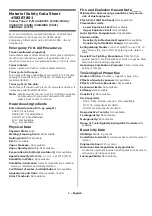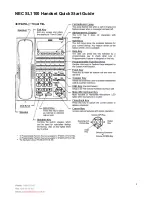
Altai Technologies Ltd. All rights reserved
C1n Series WIFI AP/CPE Web-admin Configuration Manual
TPS15-003_rev1.3
4)
WPA-PSK/WPA2-PSK/WPA-PSK-auto
WPA-Personal (WPA-PSK) or WPA2-Personal (WPA2-PSK) is designed for home and
small office networks and doesn't require an authentication server. Each wireless
network device authenticates with the access point using the same 256-bit key
generated from a password or passphrase. Similar to WPA-Enterprise (WPA) or WPA2-
Enterprise (WPA2), WPA-Personal (WPA-PSK) support both TKIP and AES as cipher
mode; WPA2-Personal (WPA2-PSK) support AES as cipher mode only. If AP is
configured with WPA-PSK-auto authentication, it supports clients using either WPA-PSK
or WPA2-PSK authentication, AES+TKIP is the only option in cipher mode in WPA-auto
security.
Figure 5-31 WPA-PSK/WPA2-PSK/WPA-PSK-auto
Authentication Mode
: WPA-PSK, WPA2-PSK or WPA-PSK-auto.
Cipher Mode
: Specify data encryption scheme; there are 3 options: “TKIP”, “AES”,
and “TKIP + AES”. AES is the only option in cipher mode in WPA2 security. TKIP causes
bad performance on 802.11n network.
Group Key Update Interval
: Specify the interval for updating group key; the default
value is 86400s.
Pass Phrase
: Specify the passphrase for authentication; the length of passphrase is
from 8 to 64 characters.
Configure a WLAN with WPA-PSK/WPA2-PSK/WPA-PSK-auto security:
1.
Select
Configuration
Wireless
Radio0
WLAN
to edit “
More…
”behind the
WLAN, and then select
WLAN Security
to access to security configuration page.
2.
Select “WPA-PSK”, “WPA2-PSK”, or “WPA-PSK-auto” in
Authentication Mode
















































